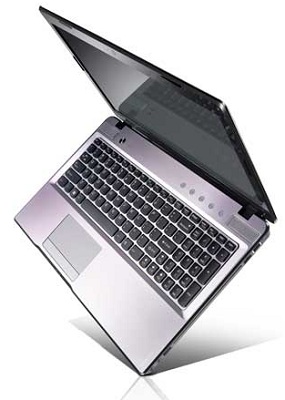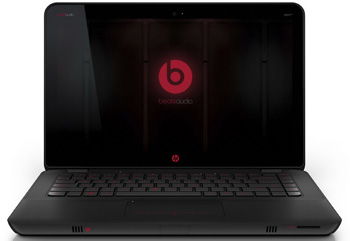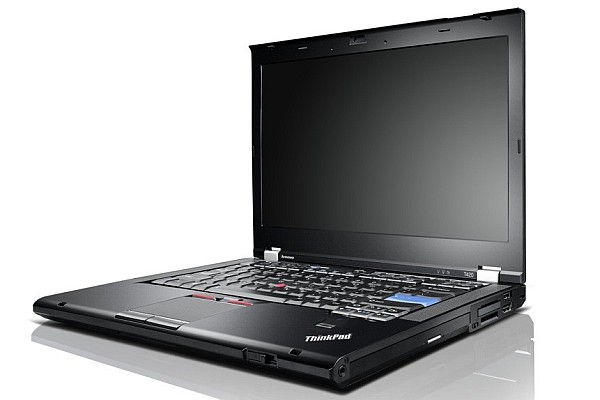Back To School Technology Buyer's Guide
by Zach Throckmorton on August 4, 2011 8:55 PM ESTLaptops
Much like the retail desktops we highlighted on page three of this article, you should expect to be able to find certain specifications in laptops at four price points that are of particular relevance to college students with generalized computing needs. At over $1,000, the laptop market starts to become increasingly niche-specific, and those are not covered here.
Less than $400

Extremely inexpensive laptops are usually not particularly well-built, and often do not feature current-generation processors. Usually, the screens and keyboards are usable but nothing special, and battery life is at best average. However, you can sometimes find the lower end of current-gen CPUs in these budget machines, as is the case with ASUS' A53E-NX1. This 15.6" laptop has an Intel Pentium B940 CPU which operates at 2.0GHz. It does not have Hyper-Threading, so it is a two core, two thread processor. However, it is based on the same Sandy Bridge architecture as the far more powerful Core i3/5/7 CPUs, so even though it's near the bottom of the Sandy Bridge ladder, it's still a very capable productivity processor that yields good battery life. It's a better option than any previous generation AMD or Intel solution you're likely to find at this price range. The laptop's other specifications are unremarkable, though it is nice to see 4GB rather than 2GB of memory. I've seen it as cheap as $350, and at that price, it's a very good value. The comparable 15.6" Toshiba C655-S5235 features a larger hard drive and weighs about 1/3 pound less, so it's another good option at this price point. I recommend these ultra-budget laptops only if you can't afford to spend another $100 or so more...
Less than $500

...Because at $500 or less you can get laptops with Intel Core i3 CPUs in them. Compared to the mobile Sandy Bridge-based Pentiums like the B940 in the above, the Core i3s offer higher clockspeeds, Hyper-Threading, more CPU cache, and better on-die graphics. Stepping up to a Core i3 CPU from a Sandy Bridge Pentium is well worth the $100 or so dollar price increase, even for the most basic computing tasks. Plus, at this price point, you'll usually get better build quality as well. Lenovo's IdeaPad Z560, a 15.6" system, is a good value at $450, and when it's on sale, it becomes a great value. HP's ProBook 4530s (also 15.6") is a nicer machine than the Lenovo, but it's a bit more expensive and comes with only 2GB RAM stock—however, considering how cheap DDR3 is, upgrading to 4GB will cost about $20, and RAM upgrades are the easiest type of upgrade to perform on a laptop.
Approaching $700
As the price tag nears $700, you can start reasonably expecting your laptop to be powerful today and good for more than just productivity even if you don't graduate until spring 2016. Laptops closer to $700 will have large hard drives, more than 4GB memory, and Intel Core i5 CPUs—or AMD A-series APUs. Unlike the less expensive laptops where AMD simply doesn't offer compelling alternatives to the Intel CPUs, AMD's new Llano Fusion APUs are very competitive. To sum things up, the A-series APUs and Core i5 CPUs both yield excellent battery life, the Intel CPUs offer more powerful processing (though the AMD APUs are still more than capable of productivity tasks, and are no slouches when it comes to compute-intense applications like video encoding and photo rendering), and the AMD APUs are far superior in terms of graphics capabilities.
Whether to go Intel or AMD is simple. Which one comes in a better package (i.e. in terms of the machine's other specifications and price), and are you interested in gaming? The answer to the first question is highly variable given how many choices and configurations are available from manufacturers, and is also dependent on pricing. The second question has a definite, invariant answer—if you want to game, get an AMD Llano APU-based system (or look for a laptop with an Intel CPU and NVIDIA Optimus switchable graphics). If you're interested in titles like Battlefield: Bad Company 2, Civilization V, Left 4 Dead 2, Mass Effect 2, Metro 2033, Starcraft 2, etc., then the A8 and A6-series APUs handily best Intel's Core i5 with HD 3000 graphics. Don't be dissuaded by the low clockspeeds of the AMD APUs—there's more to performance than processor frequency!

Lenovo's IdeaPad Z575, Dell's Inspiron 14R, and Samsung's RF711 are good representatives of this price range. The Lenovo features an AMD A6-3400M and the Dell has an Intel Core i5-2410M. Both come with 6GB system memory, large hard drives, and 1333x768 displays. The Dell, however, is a 14" model that weighs almost a pound less than the 15.6" Lenovo. It also features USB 3.0 ports. The Lenovo's hard drive is a bit more capacious. Samsung meanwhile packs an i5-2410M with Optimus GT 540M, which delivers the best of both worlds by giving you the CPU and GPU performance for just about any task, without killing battery life and with a Blu-ray drive; for that, you pay a $20-$30 premium. Deciding between the platforms boils down to personal preferences on support from the manufacturer, aesthetics, and build quality. If you want to game, Samsung will offer the fastest solution followed by the Lenovo, and the Dell is basically only good for very basic titles or older (non-OpenGL) games.
$1,000 or less
Spec-wise, $1,000 laptops rarely offer substantially better day-to-day performance than their $700 or less counterparts. At this price range, most computer users start to encounter diminishing performance returns for increased investment. Rather than offering more capable hardware, manufacturers often turn instead toward improving build quality, and/or offering discrete graphics.

If you are interested in gaming, Lenovo's IdeaPad Y570 and HP's ENVY 14-2050SE are compelling options. The Lenovo's NVIDIA GeForce GT 555M is more powerful than the HP's Radeon HD 6630M, and the Lenovo features an Intel Core i7 quad-core, Hyper-Threading CPU compared to the HP's dual core, Hyper-Threading Intel Core i5. However, the HP is a bit lighter because of its smaller chassis (14" vs 15.6"), and offers substantially better battery life (about an hour or two more of real-world usage)—so it's more mobile.

If you are not interested in gaming, it's difficult to beat the build quality of Lenovo's ThinkPad T-series laptops. The T420 in particular is a favorite amongst the graduate students in my department—an archeologist friend of mine even takes his to the field, where it's subjected to serious punishment and keeps working without issue. ThinkPads have a well-deserved reputation for being about as durable as consumer-grade notebooks come. HP's EliteBook line is also professional-grade, and the 8460p is comparable in most considerations to the Lenovo T420.
Apple's MacBook Pro line of laptops is priced above $1,000, but its least expensive MacBook Air is worth considering at this price range. Anand recently reviewed both current-generation Airs. The 11" model is an ultraportable laptop that's incredibly thin and light, so it's especially appealing to college students who will be walking a lot. Its performance is also more than sufficient for productivity work, and will remain adequate for basic tasks for years. Because it uses an SSD rather than a mechanical hard drive, it's especially snappy. One glaring negative, though, is its small internal storage capacity.
That said, regardless of whether your laptop has a massive 750GB hard drive or 64GB SSD, you don't want all of your files on one disk. The next page covers external storage options.










94 Comments
View All Comments
The0ne - Friday, August 5, 2011 - link
I think the recommendations covers too broad the general view of a college student. Many of these aren't even needed as a good 15" or even a 17" will do just fine. If you want to game, that's a whole different area to pursue with even more accessories to consider. It's not as if you are going to lug around all those equipments with you on campus nor have all the time in the world to do everything.I also vote for the inclusion of a very good bag to lug around books and your accessories!
Fujikoma - Friday, August 5, 2011 - link
Given how most students live, I'd recommend a desktop for durability. Most really don't need the extra power and could get by with a laptop, but most aren't careful enough when it comes to long term care. There were three of us in a 12'X12' room (largest on campus) and we shared one desktop (early 90's and two of us couldn't afford one) instead of going to the eng. bldg. With the exception of the music student (Apple fanatic), everyone owned an intel/amd custom build with one atari (800XL) and one commodore (don't remember) thrown in for good measure. Maybe it was because we were all science/eng. majors. The laptop, a friend lent me, didn't help during class. It was much easier taking notes. Of course, playing games during a boring lecture was a bonus, but the laptop really had no value. A laptop really serves a student that goes home regularly and needs to work on their classwork while away. Of course, I don't think graphing calculators should be allowed in any math class prior to differential equations. Same thing with the iPads the local middle school is buying instead of books... it has no place in a school. Call me old fashioned but learning how to solve a problem the hard way with repetition is far better than just entering data and letting a gadget do all the work (our interns (and a few of our engineers) are idiots who have very little comprehension of why things don't work).I have a 17" screen on my laptop, because it's as small as I'll go when I visit family out of state and I need to work on graphics stuff. Otherwise, it's my excessively large tower (very old, but easy to keep cool) with a much better and larger monitor.
andymcca - Friday, August 5, 2011 - link
I just bought a Llano machine for $400 after a $50 rebate. It's an HP G6-1b60us, and while historically I've not been an HP fan, I'm impressed. Granted, its based on an A4-3300M (lower end Llano), but the few games I've tried so far (WoW, Starcraft 2) play great with a mix of "ultra" and medium settings. It might be worth mentioning that there are some Llano machines well under $700.I am annoyed at certain retailer, though. We will call it "small center". The sales person was trying to tell me that it might not even launch old games or something. I tried to let him know that integrated no longer means total crap, but I don't think I got through.
Taft12 - Friday, August 5, 2011 - link
Oh, you got through. He was using an upselling tactic that usually works on non-tech-savvy customers.weiran - Friday, August 5, 2011 - link
If there are "legions" of Android tablet fans, why aren't they buying them?chedrz - Friday, August 5, 2011 - link
I started my time at college with a laptop that was a few years old at the time. It lasted one year before it died. Unfortunately it was pre-Centrino, so it really wasn't very portable. After it bit the dust I switched to a desktop and had no problems typing/working with it. My last year or two I also added a netbook so I did have that portability factor. If you're able to manage file storage well with multiple systems, then I'd highly recommend the desktop/netbook combo route. You don't need a lot of processing power while you're sitting in a lecture hall taking notes/web browsing/scrolling through PowerPoint, and then you have the extra power (if needed) back in your room on your desktop.rageguy34 - Friday, August 5, 2011 - link
I purchased a 13" macbook pro for my sister to take to college. I live in Texas and she decided to go to college in Minnesota! The main reason I chose the macbook was for the warranty, with the apple care plan she can take it to any apple store and have it repaired since I won't be anywhere near her for support. This way she doesn't have to deal with calling a 1800 number and shipping/receiving her laptop if anything goes wrong.I do a ton of RMAs for work and I wouldn't want my sister to have to go through anything like that.
f4phantom2500 - Friday, August 5, 2011 - link
There's a Gateway laptop (model #NV55S04U) on Best Buy's website with an A6 3400M, 4GB RAM, 500GB HDD and a 15.6" screen for $479.99. There's also an HP laptop (model #g4-1117dx) with an A4 3300M, 4GB RAM, 320GB HDD and a 14" screen for $399.99. Both of these look like solid deals (the Gateway moreso, obviously), for budget laptops with a "good enough" CPU and reasonably capable graphics, all things considered.aliasfox - Friday, August 5, 2011 - link
I went to school with (what was then) an ultraportable PowerBook G4 - with the exception of the hard drive, I used four seven years (PITA to replace, btw).Definitely an advocate of a laptop for most users.
- Roommate comes back with a girl, you want to be able to scram without having to wonder if you have all your stuff with you
- Notes in class
- Writing papers in the library
These are all things that are much more functional with a full size keyboard and/or somewhat-faster-than-netbook performance.
Most important factors, in my opinion:
- Nice keyboard and external mouse. My PowerBook has a phenomenal keyboard that few laptops match. Thinkpads, MacBooks, and some Dell Latitudes have them, but most consumer level machines don't. This matters a lot when you're trying to write a 20 page research paper in about 12 hours.
- Portability. Not talking about weight, but sheer size - 15" and 17" laptops are just harder to fit into shoulder bags or smaller backpacks, as well as the tiny desks some classrooms have. Also, when you're flying back home for the holidays, that behemoth won't open on the table in coach.
- A reasonable graphics card. No, you don't need a 6970m, but a Sandy Bridge level GPU minimum for when your friends want you to try something. I can't tell you how often I saw people playing slideshows of WoW, SimCity, or some other "low end game" on their Intel 950 graphics...
- External HD - like it or not, college kids will "accumulate" lots of media that will fill up an internal HD. Also good for back up.
- Video outputs - there are TVs in lounges and projectors in classrooms, hooking up your laptop is a good way to watch movies or give presentations. I could output VGA and S-Video, throwing in DVI/HDMI (and the right cables) would cover almost any base.
An external monitor would be nice too (especially considering that PowerBook had a relatively dim 12" XGA display that showed relatively little of the color gamut), but that (as well as speakers) should wait until you understand how you're comfortable setting your room up.
Just my opinion.
indianidle - Friday, August 5, 2011 - link
I had expected see a mention about Tablet PCs. Sure they're bigger, heavier and more expensive compared to iPad/Android tablets, but they also faster, more capable and can actually be used for productive work. Looking at future compatibility, Windows 8 will have a good touch interface and you'd be able to run it comfortably on these systems. I also think you should also add SkyDrive (25GB!) to the list of cloud storage options.